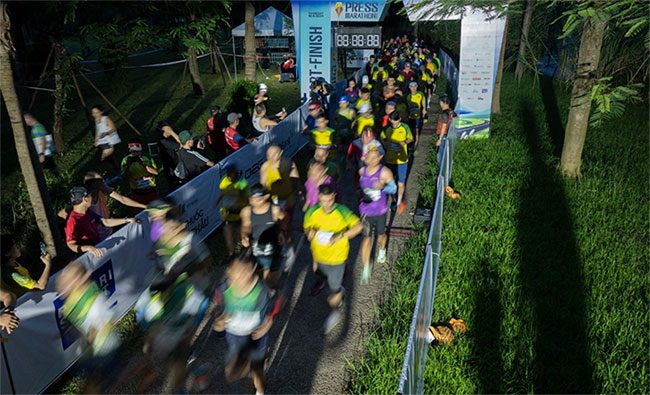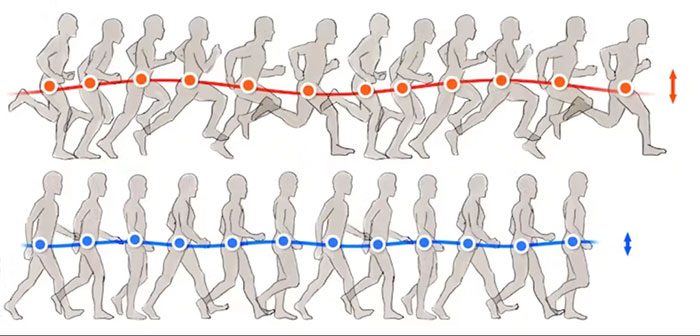It’s no surprise that running burns more energy than walking over the same distance. But why is that?
Typically, you need 45 minutes to complete a 3 km walk each morning. But today, you decide to run that distance in 20 minutes.
As a result, by lunchtime, you feel more fatigued and have the sense that you’ve expended more energy than usual during the trip, even though it was the same distance as on other days.

Image from the Press Marathon 2024 featuring over 500 athletes (Photo: Mạnh Quân).
Perhaps everyone knows that running burns more energy than walking over the same distance. But why is this the case?
Energy Expenditure While Running
By observing someone running, you can accurately track their vertical movement (up and down), including the pelvis and head.
It is evident that when we run, the distance our bodies move up and down is greater than when we walk.
To perform this vertical movement, the muscles in the lower limbs naturally have to exert more force.

Running involves greater vertical oscillation compared to walking. This is why running consumes more energy than walking over the same distance (Photo: SC).
In simple terms, when you run, part of the energy expended is used to lift your body upwards, occurring simultaneously with the forward movement. This is what causes your body to expend more energy, even over a similar distance.
The difference between walking and running is not only limited to what happens during the activity.
In fact, every physical exercise will cause a delayed energy expenditure, which then compensates to form the total energy expenditure during the activity.
On average, the additional energy consumption after running is double that of walking.
Is Running or Walking More Energy Efficient?
According to research, running clearly burns more calories than walking over the same distance.
However, this only applies if the walking speed is considered “normal” (about 5 km/h).
If you walk at a slower pace, it will take you much longer to cover the same distance. Therefore, the total calories burned may ultimately be higher.

This is because the body will expend a certain amount of energy over a unit of time, regardless of what is being done. This factor is known as “basal metabolic rate.”
The same applies if the walking speed is very fast (over 8 km/h), also known as energy-efficient running. In this case, the body activates more muscle but cannot leverage the elasticity of the tendons like it can during running.
As a result, the body’s energy consumption will be equal to or even greater than that of normal running.
Regardless of whether you walk or run, choosing a reasonable strategy that suits your body is considered crucial. This is because it not only allows you to achieve your goals but also helps keep your body healthier while avoiding unwanted negative effects.




















































